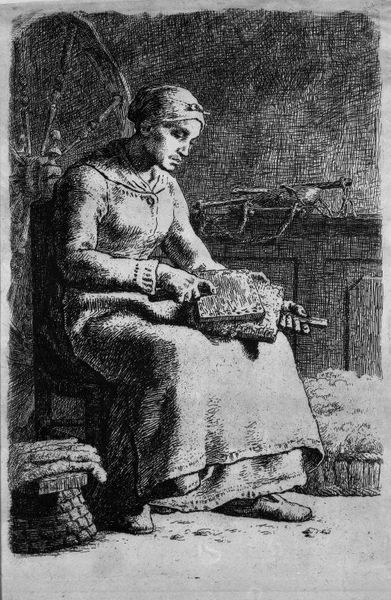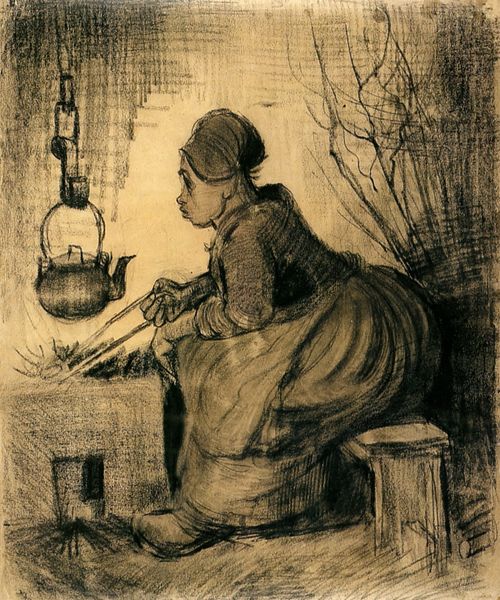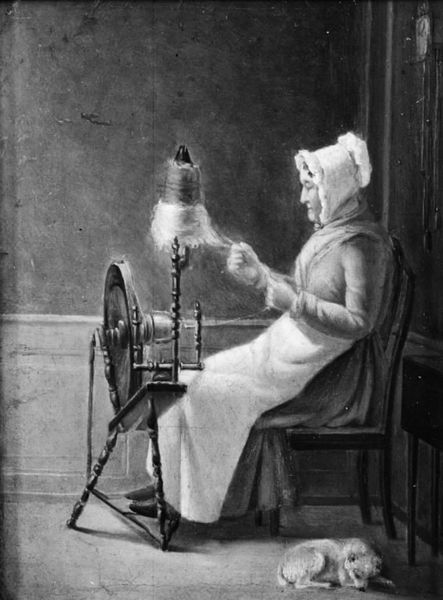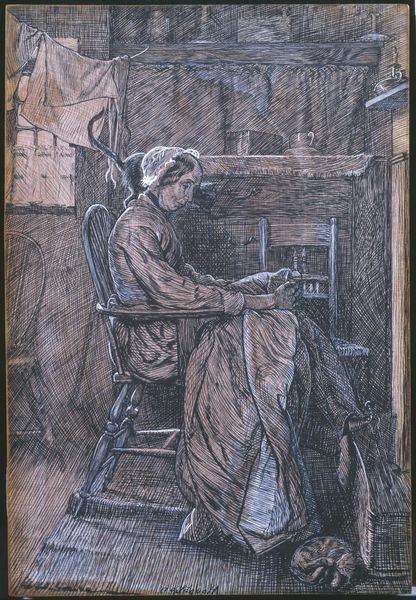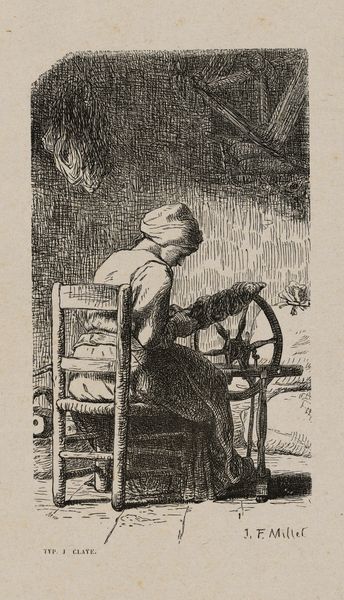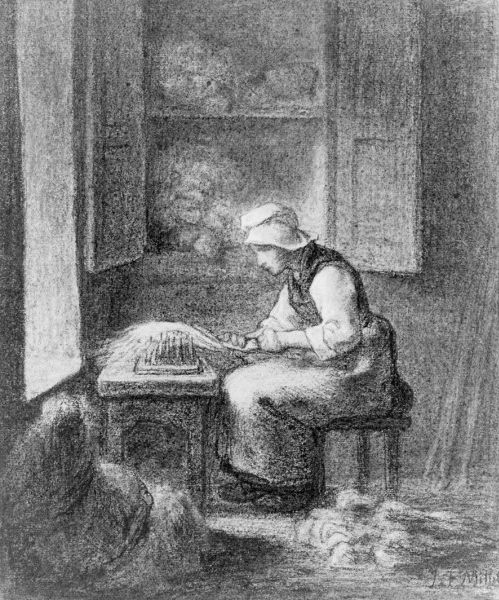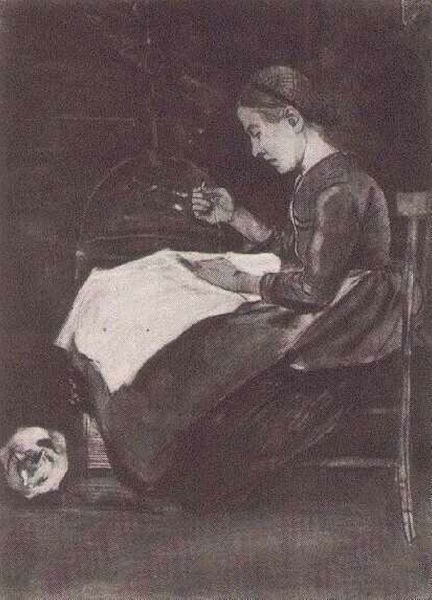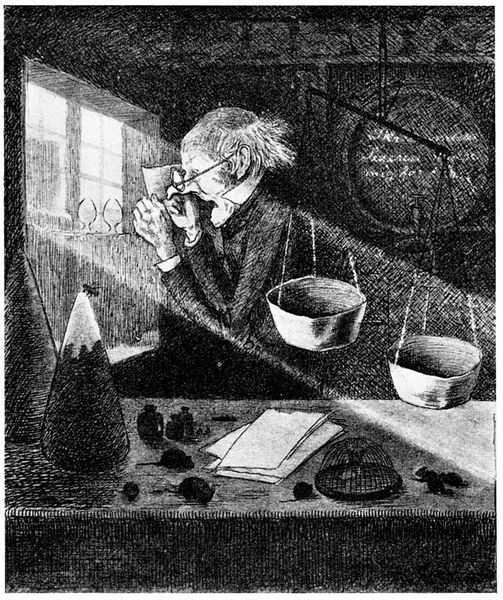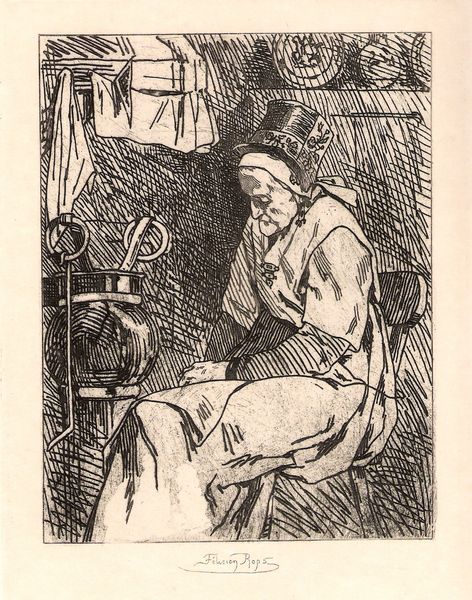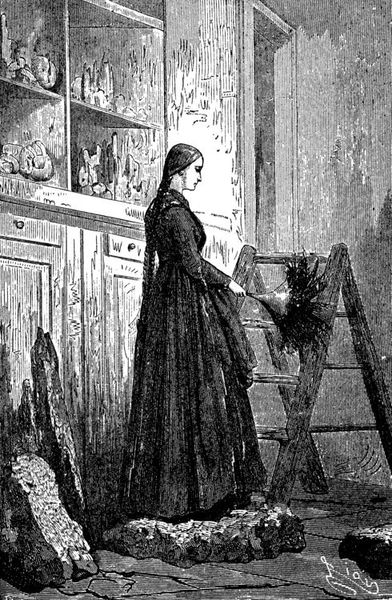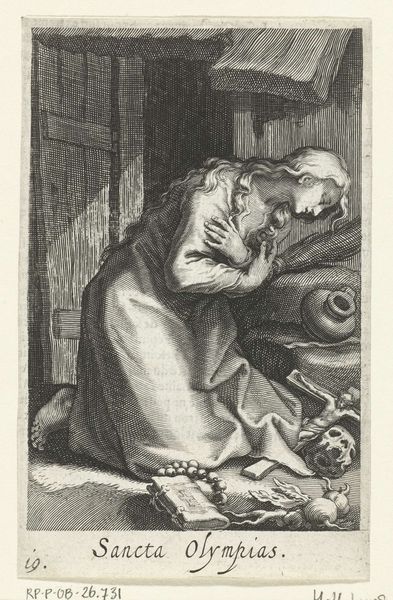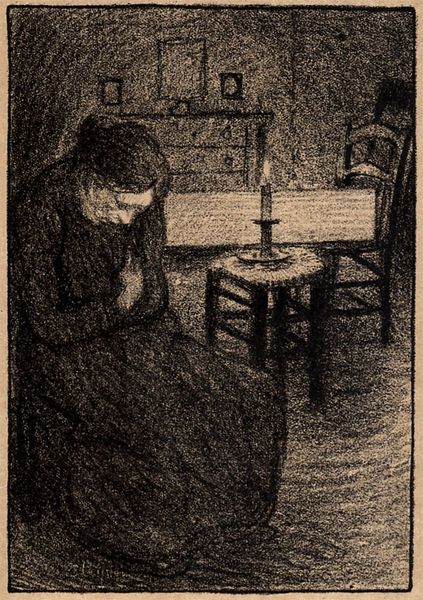
drawing, charcoal
#
portrait
#
drawing
#
landscape
#
charcoal drawing
#
portrait drawing
#
genre-painting
#
charcoal
#
northern-renaissance
#
realism
Copyright: Public domain
Jean-François Millet created this image of a spinner using engraving, a printmaking technique, in nineteenth-century France. The work offers an insight into the lives of rural women, where spinning was a necessary household task. It's important to remember that this was a period of rapid industrialization. Factories were becoming more common, so the act of spinning at home carried social weight. Millet was associated with the Realist movement, and his images often focused on the lives of peasants. This print can be read as a comment on the changing social structures of the time. Was he critiquing the loss of traditional skills, or was it a celebration of the self-sufficiency of the working class? As historians, to understand this work better, we can look into the economic conditions of rural France during the nineteenth century. We can analyze the representation of women in art and society at the time. By looking at the social context, we can have a better understanding of its historical meaning.
Comments
No comments
Be the first to comment and join the conversation on the ultimate creative platform.
